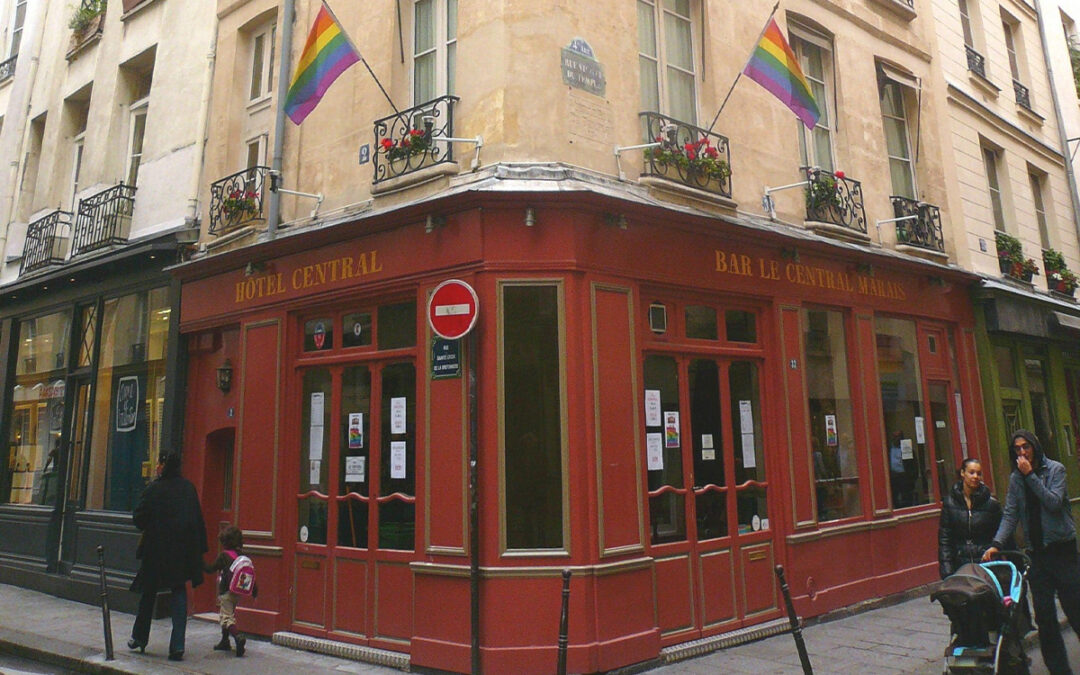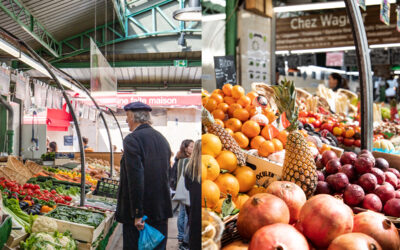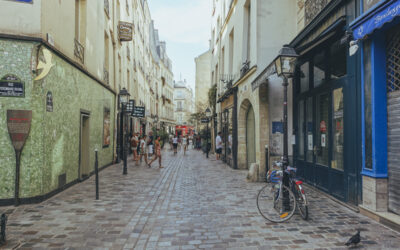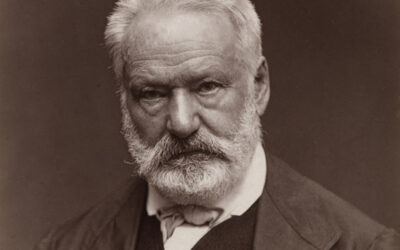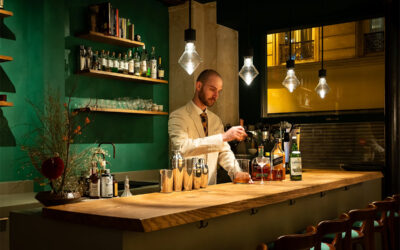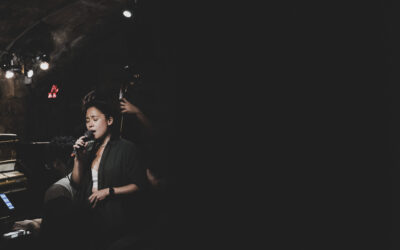Central Bar, October 2010
Closed in 2010, the Le Central bar was one of the most emblematic places for the LGBTQ+ community in Paris. Located at 33 rue Vieille du Temple, it marked the nightlife of the Marais for more than thirty years. A brief look back at the history of this legendary place.
During the 70s, the Marais was a gray, industrial district and much less attractive than today. The houses there were unsanitary, the streets poorly lit and businesses almost non-existent apart from a few wholesale stores. It is the low level of rents as well as the inauguration of the Center Pompidou which will encourage several traders to open their stores in the district.
It was not until 1978 that the first Parisian gay bar opened its doors, “Le Village” located on rue du Plâtre. Its low prices, its good-natured and popular atmosphere had attracted many gays to the neighborhood fleeing rue Sainte-Anne, considered elitist and expensive. The establishment will have great success and very quickly, other gay bars flourish in the Marais.
Maurice McGrath, a former Royal Navy sailor, bought an old hotel located on Rue du Temple and renovated it in September 2010 to turn it into a hotel and bar. This is the birth of the legendary “Central”, as it was nicknamed at the time.
The pride flag is displayed there and gays and allies meet there. This strong attractiveness and affluence will make the streets of Sainte Croix de la Bretonnerie and the rue Vielle du Temple, the two streets the epicenter of the gay district. Very quickly, other gay establishments emerged near the Central, such as the “Les Mots à la Bouche” bookstore, the “Le Subway” bar and the “Avatic” coffee shop.
After thirty years of practice, Maurice McGrath was forced to retire due to health issues and left a note on the window thanking his customers for more than 30 years of loyalty. On October 9, 2010, a crowd of old and new customers gathered for a drink in homage to the last day of the legendary Central.
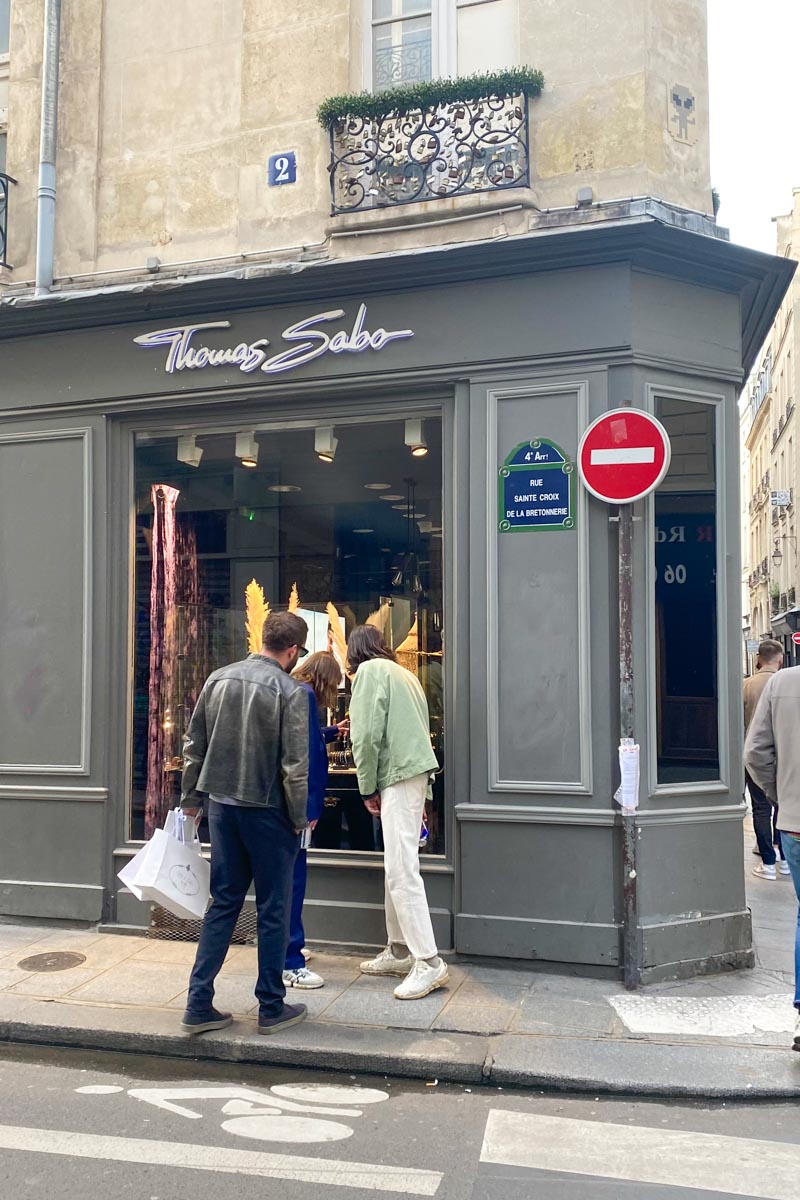
The Thomas Sabo jewelry store, June 2022
Today, the hotel has given way to a luxurious jewelry boutique: Thomas Sabo. If the hotel was unable to resist the gentrification that has affected the neighborhood for several years, it will remain for many the emblem of the transformation of the Marais into a progressive and gay-friendly neighborhood.
Text: Morgane Joulin
17.06.22
FOR PASSIONATES OFUS
The Enfants Rouges market, everyone loves it
Restaurants, merchants, a photo store, a bookstore... This is how the Red Children's Market presents itself, unique in its kind in the Marais and its capital because it is the only one to offer such a varied and varied range of restaurants. qualitative.
The Marais Jewish quarter in Paris
From the 13th century, the Marais was home to a Jewish community which remained there until its expulsion in the 14th century. Fleeing poverty and persecution, Jews from Eastern countries and those from Alsace settled there in the 19th century. Around rue des rosiers and Place Saint-Paul renamed Pletz…
Victor Hugo, the writer with a thousand talents
Born in 1802, Victor Hugo became a social writer, a playwright, a poet, a novelist and a romantic designer. Nicknamed the man-ocean then the man-century, he is a political figure and a committed intellectual. He found success with Notre-Dame-de-Paris in 1831 and with Les Misérables in 1862.
NOW ON THE MOOD MARSH
Divine brunch at the foot of Notre-Dame
Of course, officially, it is not the Marais. But at Son de la Terre, a barge recently moored at the Montebello quay (5th), the 4th arrondissement is in sight. Moreover, this one is incredible: on one side, it is Notre-Dame flooded with sunlight; on the other, the quays, the book sellers, the walkers, the joggers.
Saka, a cocktail bar like in Tokyo
Here is an address which gives the measure of the transformation of the Marais. And it's enough to silence the grumpy people whose mantra is: “It was better before…” No, everything was not better “before” in the Marais. Besides, there was no American bar like Saka, which cultivates a form of excellence that can only be found in Japan.
Jazz at 38Riv: The highlights of May
The only jazz club in the Marais, 38Riv is the temple of cool and swing. Rue de Rivoli, between Saint-Paul and Hôtel de Ville, its vaulted cellars are the home base of the new jazz scene. Every evening, the magic happens.

